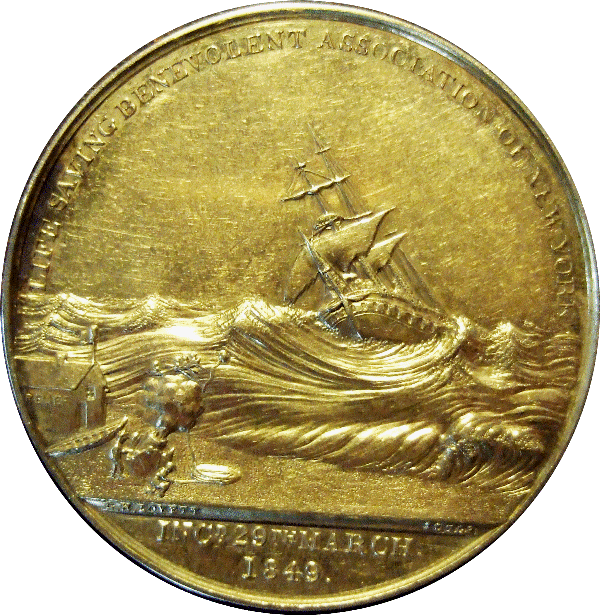In 1849, a group of private citizens (including merchants, ship-owners, and underwriters) organized a fund called the Life Saving Benevolent Association of New York (LSBA) to compensate acts of heroism in saving lives at sea. In January 2009, the Seamen’s Church Institute of New York and New Jersey (SCI) took on an administrative role for the LSBA, assuming responsibility for processing and validating applications from life-savers, coordinating Board meetings and holding annual awards ceremonies.
New York Harbor saw many wrecks and loss of life in the years leading up to the LSBA’s formation: between 1839 and 1848 there were 338 shipwrecks along the coasts of New Jersey and Long Island. In response, the LSBA, working with the newly established U.S. Lifesaving Service, assisted in the construction and operation of life-saving stations along New York’s coastline, staffed by a combination of Federal employees and volunteer emergency response teams comprised mostly of fishermen and their families. The LSBA furnished each station with equipment to aid in rescues, including a newly designed lifeboat pioneered by Joseph Francis, credited with saving thousands of lives within its first few years of use.
During World War I, the US government assumed control of the life-saving stations, absorbing them into what formally became the US Coast Guard in 1915. Stations now stretch along both coasts of the US, the Great Lakes, the Gulf of Mexico and other American waterways. The LSBA continued its contribution to the life-saving stations by providing radios and books to the stations’ crews.
Additionally, the LSBA rewards individuals who participate in water rescues by granting monetary compensation, pins and medals to recognize heroism at sea. The LSBA’s original charter states that the Association’s primary purpose is to “recognize and reward courage, skill and seamanship in the rescue of human life on the sea or any navigable waters … to encourage training in seamanship, lifeboat work, methods of rescue in the water, and the resuscitation of victims of submersion.”
The LSBA’s records date back to the Association’s inception, consisting of correspondence, financial ledgers, meeting minutes, statements of awards granted, photographs, miscellaneous pamphlets and other printed material. As a whole, the collection documents a unique perspective of the US Coast Guard’s history and provides a valuable resource for researchers interested in the maritime history of New York City. Archives Fellow Shira Bistricer processed the collection as part of SCI’s ongoing collaboration with the Queens College Libraries Department of Special Collections and Archives.
by Johnathan Thayer, Ph.D., Consulting Archivist, and Shira Bistricer, former Archives Fellow, the Seamen’s Church Institute of New York and New Jersey
